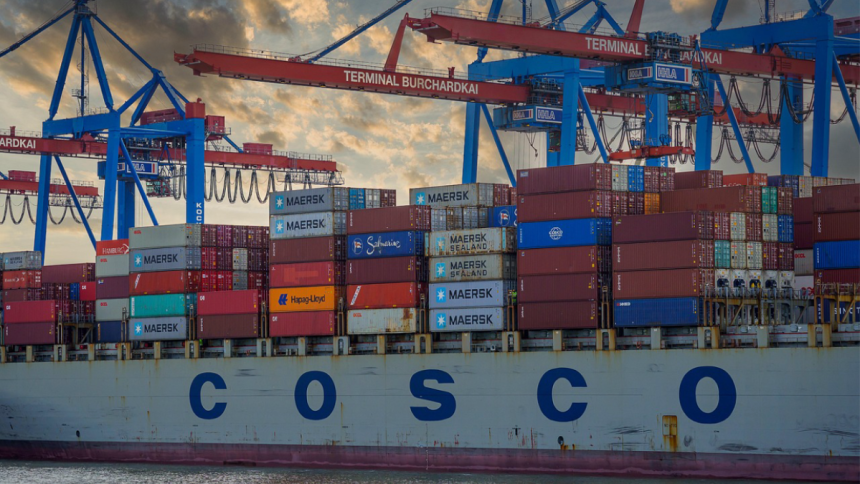Supply chains are evolving faster than ever. What used to take months or even years to implement can now be deployed in a matter of weeks.
But what changed? Integration technology. These advances in technology are reshaping the way global supply chains operate. They streamline data flow, improve visibility, and create smarter, more agile logistics networks. So, if you don’t adapt your business to these changes, you risk falling behind.
Ready to make the shift? In this article, we’ll break down nine emerging tech trends driving this shift. From AI-driven forecasting to autonomous robots in warehouses, these innovations are shaping the future of supply chain integration.
1. AI-Driven Demand Forecasting
Artificial intelligence is changing the way supply chains respond to demand. Instead of relying on static spreadsheets or historical data alone, AI tools analyze patterns in real time. They predict shifts in consumer behavior, seasonal spikes, and even market disruptions.
With this kind of precision, companies can automate procurement planning, reduce stockouts, and manage seasonal inventory efficiently. This results in a much tighter balance between supply and demand, and less waste along the way.
2. IoT-Enabled Tracking and Monitoring
Internet of Things (IoT) devices are giving supply chain teams a whole new level of control. Smart sensors embedded in shipments and vehicles deliver real-time visibility across every mile of the journey.
This kind of logistics tech helps reduce risk. If something goes wrong, say a delay or temperature shift, you’ll know instantly. That means faster decisions, fewer losses, and happier customers.
3. Blockchain for Transparency and Security
Blockchain isn’t just for crypto. In the supply chain world, it’s a powerful tool for building trust. Each transaction or data point is recorded in a secure, unchangeable ledger that everyone in the network can access.
This helps verify the source of goods, track handoffs across suppliers, and ensure compliance with regulations. For businesses focused on ethics and traceability, blockchain adds an extra layer of confidence.
4. Robotic Process Automation (RPA) in Logistics
Think of RPA as your digital workforce. It handles repetitive logistics tasks like data entry, order updates, and invoice processing, without human intervention.
With that, you’ll see faster operations, fewer errors, and lower costs. RPA frees up your real workforce to focus on strategy and service. This kind of automation is a smart move for companies to scale efficiently, efficiently in the modern world of logistics tech.
5. API-First Supply Chain Integration Software
Modern supply chain integration software enables real-time API connections between systems, platforms, and partners.
This kind of setup makes API integration in logistics seamless. You can onboard new partners faster, sync data without delay, and adapt quickly when things change. Unlike older EDI-based systems, APIs offer more flexibility and lower costs over time. Integration-ready platforms like these are built for the pace of modern business.
6. Digital Twins for Simulating Supply Chain Scenarios
Digital twins are virtual models of your physical supply chain. They let you test different scenarios without touching your real operations. Some of the scenarios you can test include demand spikes, new supplier routes, and shipping delays.
These models help identify risks and spot opportunities for improvement. Over time, they become a powerful tool for optimizing system performance and staying ready for whatever comes next.
7. Cloud-Based Collaboration Platforms
Forget endless email threads and siloed spreadsheets. Cloud-based platforms are transforming how supply chain partners communicate and share information.
With everything in one place, teams can collaborate in real time no matter where they’re located. It cuts down on delays, reduces duplicate work, and creates a more connected supply chain ecosystem.
8. Autonomous Mobile Robots (AMRs) in Warehouses
With autonomous mobile robots (AMRs), warehouse automation has become a reality. These robots move inventory, assist with picking, and streamline fulfillment in real-world warehouse settings.
Unlike older systems that required fixed paths, AMRs can adapt to their environment, navigate safely, and work alongside humans. With this, you enjoy faster operations, fewer errors, and better use of floor space, ideal for long-term business growth.
9. Sustainability Tech & Circular Supply Chains
Sustainability is no longer optional. The good thing is that tech tools are also making it easier for businesses to integrate this aspect into their operations.
Tech tools can help track carbon emissions, manage reverse logistics, and support circular supply chain strategies.
From eco-friendly packaging to optimized return flows, companies are using this tech to meet ESG goals while cutting costs. According to Gartner, 74% of supply chain leaders expect the circular economy to increase business profits.
Conclusion
These nine technologies are more than just trends. They represent a shift in how modern supply chains operate.
Each tool, from AI forecasting to real-time API connections, helps streamline operations. They’re also key in boosting visibility across the board.
If your business wants to stay competitive, now is the time to invest in integration-ready systems. The earlier you adopt these tools, the more prepared you’ll be for whatever the market throws your way.
Lynn Martelli is an editor at Readability. She received her MFA in Creative Writing from Antioch University and has worked as an editor for over 10 years. Lynn has edited a wide variety of books, including fiction, non-fiction, memoirs, and more. In her free time, Lynn enjoys reading, writing, and spending time with her family and friends.















